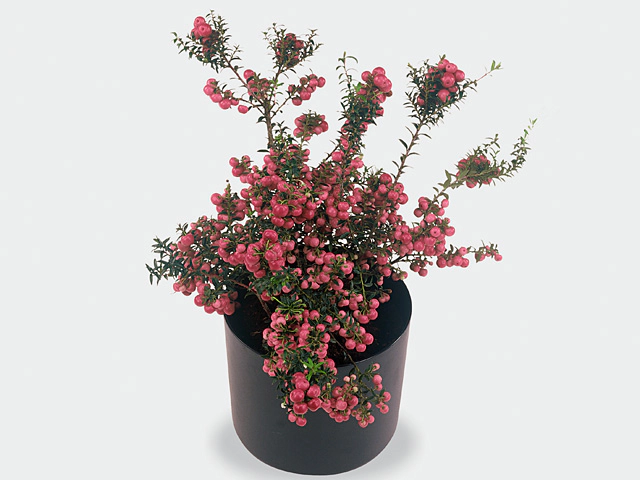Gaultheria mucronata

| Winter hardness | Reasonable (USDA-zone 7) |
| Fruit color | Red; Purple; White; Light blue violet; Pink |
| Leaf, general shape | Lanceolate |
| Plant height | 70 - 80 cm; 60 - 70 cm |
| Flowering month(s) | May; June |
| soil pH requirement | Slightly acidic (pH 4,5 - 6,5) |
| Light conditions | Semi-shades; Sunny |
| Plant, growth type | Erect |
| Toxicity (if consumed) | Highly toxic |
| Moisture requirements | Moist |
| Soil type | Humus rich |
Gaultheria mucronata, commonly known as Aromatic Wintergreen, is a fascinating plant with various attributes that make it an interesting addition to any garden. This evergreen shrub is known for its beautiful and fragrant foliage, as well as its vibrant colored fruits. Let's explore this plant in more detail.
One of the first things to note about Gaultheria mucronata is its winter hardiness. It can withstand reasonably cold temperatures, being suitable for USDA zone 7 and higher. This makes it an excellent choice for individuals living in areas with moderately cold winters.
The fruits of Gaultheria mucronata are a true delight to behold. They come in an array of colors including red, purple, white, light blue-violet, and pink. These berries not only add a pop of color to your garden but also attract birds and other wildlife, making it an excellent choice for those interested in creating a wildlife-friendly environment.
The leaves of Gaultheria mucronata are lanceolate in shape, giving the plant an elegant appearance. Growing to a height of 70-80 cm, this shrub is relatively compact, making it suitable for smaller gardens or planting in containers. It also has an erect growth habit, adding structure to your garden design.
Regarding flowering, Gaultheria mucronata produces blooms in the months of May and June. These flowers are small and delicate but enhance the overall aesthetic appeal of the plant. Moreover, during this time, the shrub releases a pleasant aroma that adds to its charm.
When it comes to soil preferences, Gaultheria mucronata thrives in slightly acidic conditions, ideally with a pH ranging from 4.5 to 6.5. It prefers soil that is humus-rich and slightly moist. This indicates that it is essential to provide adequate organic matter and ensure proper drainage while planting this species.
In terms of light requirements, Gaultheria mucronata can adapt to a range of conditions. It can thrive in semi-shade or sunny areas, making it a versatile choice for various locations within your garden.
It is important to note that Gaultheria mucronata is highly toxic if consumed. Therefore, it is essential to keep this in mind, especially if you have children or pets. It is recommended to plant it in an area where it is out of reach or clearly inform others about its potential toxicity.
In conclusion, Gaultheria mucronata is a captivating plant that can enhance the beauty of any garden. Its winter hardiness, colorful fruits, lanceolate leaves, and fragrant blooms make it a popular choice among gardening enthusiasts. With proper care and attention to its soil and light requirements, it can thrive and bring joy to both humans and wildlife alike.
Market availability index by month:
| Jan. | Feb. | Mar. | Apr. | May | Jun. | Jul. | Aug. | Sep. | Oct. | Nov. | Dec. |
|---|---|---|---|---|---|---|---|---|---|---|---|
| 1 | 1 | 1 | 1 | 1 | 1 | 1 | 3 | 4 | 4 | 3 | 1 |